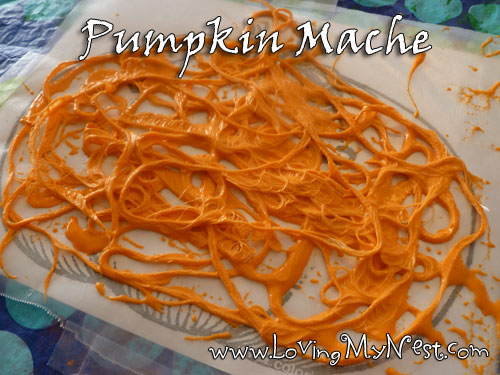 A pumpkin-themed study is a great opportunity to learn some of the science of pumpkins. My 4 year old Grace just loves learning new things. She is the constant asker (I'm sure that's a word) of questions, especially "why?" and "how?"; often challenging my own understanding of the world. There are many very basic activities that we can do with our young children to promote curiosity about the world and fulfill their desire to learn.
A pumpkin-themed study is a great opportunity to learn some of the science of pumpkins. My 4 year old Grace just loves learning new things. She is the constant asker (I'm sure that's a word) of questions, especially "why?" and "how?"; often challenging my own understanding of the world. There are many very basic activities that we can do with our young children to promote curiosity about the world and fulfill their desire to learn.
Before you start a hands-on experience with pumpkins, you probably want to go out and get a pumpkin. Maybe even a few different varieties and sizes, if possible. When we went to a local pumpkin patch, Grace was awed at the different kinds of pumpkins. I wish we could have gotten one of each! If you live in Maryland, here is my post about pumpkin patches in your area.
Learn about the life cycle of a pumpkin.
As a teacher, I've taught about many different life cycles: butterflies, pumpkins, frogs, trees, humans. Once kids learn about one, they can apply that knowledge to help them understand other life cycles, and they really do love learning about them. First, learn about the pumpkin life cycle in a book, like Gail Gibbons' The Pumpkin Book, the DLTK Pumpkins mini-book, or watch a video about it. Then, you could print out the life cycle sheet and have your child color it. Cut out each section, string in order on a piece of yarn, and tape them closed. You could even make it a necklace. I like to emphasize with my little ones how amazing God's creation of our world is, and life cycles are a perfect example of this.
Learn pumpkin parts
Exploring and talking about the parts of a pumpkin can be done with children of any age. Start with a real pumpkin if you can, and look at it carefully. Talk about the stem and it's purpose. If you were able to venture out to a field with pumpkins, make connections to what you saw: vines, dead flowers, rotting pumpkins, etc. Children 3 and up might be interested in doing this little Parts of a Pumpkin labeling sheet. You could also label the parts of a real pumpkin.
Explore pumpkin characteristics
With little ones, this could range from seeing if they sink or float to throwing them against concrete to see what happens. Both sound fun! Toddlers love water play, so putting some pumpkins in water, especially if you have varying sizes and types, to see what happens will be fun and a start to the scientific process. When you're "done" with your pumpkins, after Halloween or Thanksgiving, let your little ones destroy them, all in the name of learning!
Explore pumpkin innards
Cut open a pumpkin or two and let the kiddos check it out. Some will just want to look, while others will love sticking their hands in and feeling around. It might get a little messy, so a smock or old t-shirt is probably a good idea. Practice counting the seeds you find. You modeling how to count will help your little one, especially for numbers that are hard for him. Save the seeds, and bake them, string them in a necklace or garland, or plant them. Build vocabulary by using describing words like squishy, stringy, soft, and spongy. Talk about the parts that they notice inside the pumpkin. Discuss what those parts might do. You could also see if the pumpkin floats or sinks when cut in half, or salvage the pumpkin for an experiment on rotting (see below).
Study decaying pumpkin
Preschoolers may find it fascinating to watch the end of a pumpkin's life as it rots. I have had many discussions with Grace about what happens when various foods rot or "go bad". I know I tend to keep my pumpkins into the rotting stage by accident, so this year, I'm going to do it on purpose! Observe the pumpkin after it's made it's jack-o-lantern debut on Halloween. Talk with your child about what he notices each day or whenever you check on it. Make connections to the life cycle of a pumpkin and the purpose behind a pumpkin returning to the earth. Below is a link to an experiment from PBS with a short video from Sid the Science Kid.
Plant a pumpkin
If you saved those seeds from your pumpkin, try planting them to grow a new pumpkin. This completes the life cycle and will be a great opportunity for your child to see it firsthand. Now, planting a pumpkin outside in the fall will probably not work out so well, unless you live in a warm climate. But, you could start it indoors or try a greenhouse. Or you could do as we did at school when we had to release newly developed butterflies in November, and let nature takes its course with your pumpkin plant. It's a good lesson!
I'm excited to try some more of these out with the kiddos! Hope your little ones enjoy learning about pumpkins.
- Jessica























































